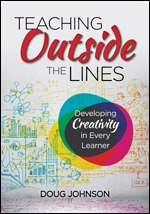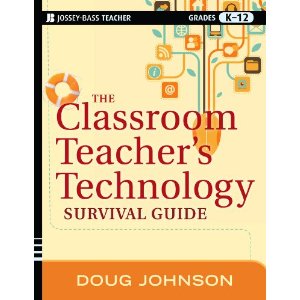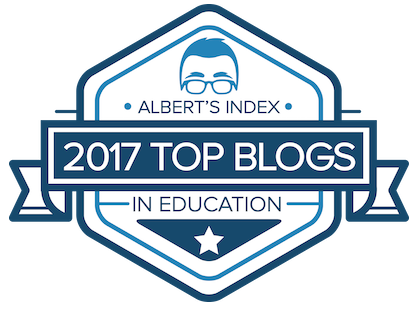- Network costs (WAN and Internet) $65350
- CODE 77 (150 teacher computers ) $166500
- New teacher training $10000
- Infinite Campus $72000
- Mastery Manager $12000
- Viewpoint $19000
- Shoutpoint $22000
- Follett Library systems $15500
- Worldbook $5000
- Learn 360 $7500
- Audio Systems project $50000
- Wireless Systems upgrades $50000
- Elem building tech $120000
- Secondary building tech $120000
- Secondary career ed $30000
- Community Ed $10000
- District tech $95000
- Online Learning $20000
- Salaries $250000
How often is the District Technology Plan updated/revisited? Who has input to the Tech Plan and how is that input gathered?
In a sense, we have two technology plans - the 3 year plan that we construct for the state and to satisfy e-rate requirements. We dutifully put this together on request with input from staff surveys, consultation from departments and administrative teams, and our advisory committee. We also create an annual list of goals and objectives. This created primarily by members of my department and then modified/validated by our advisory committee and administrative teams. You can see examples of both here <
http://www.isd77.org/page/4103>.
What sources do you use to find information on technology topics? Where do you get ideas for new technology tools and what the “next” thing/direction in the district will be? (What do you think that “next thing” is right now?)
I am a GoogleReader addict, subscribing to dozens of blogs and news feeds in both general education, general technology, educational technology and library fields. I read the blogs of people like Daniel Pink and Scott Adams and David Pogue. I am also old school enough to read the professional magazines and periodicals that come across my desk and even professional books! I don't listen to podcasts or watch many videos.
Our district is currently trying to strategize on how to get a device into every student's hands, how these devices will be used to support teaching and learning, and how to provide the infrastructure and staff development needed to be successful. My cloudy crystal ball says that the $200 Google Nexus tablet is just the first of many such devices that will make 1:1 or BYOD financially possible for nearly every district - finally.
 How is professional development related to use of technology organized and encouraged in the district?
How is professional development related to use of technology organized and encouraged in the district?This is a moving target right now. We are working closely with our teaching/learning/curriculum directors to try to focus our SD efforts on supporting whole district initiatives rather than technology specific goals. This means integrating our classes with regular PD classes rather than separate tech training.
We are also trying to define the district and building level responsibilities for training staff in using tech efficiently. What are the specific roles of the district-level tech integration specialists and what are the responsibilities of the school librarians and tech-savvy classroom teachers in helping teachers?
Does your district collaborate with any other school districts to share ideas or to mentor? If so, how is that conducted?
We have just partnered with two neighboring districts and the local university to offer an Innovation Zone conference last summer. We also work with our regional telecommunications consortium, participating in staff training, idea sharing, and cooperative purchasing of tech services at monthly meetings. My staff and I try to attend the KIC meetings (in the Twin Cities) when we can as well.
Does each school decide how much and what kind of technology they will use, or is this done at the district level?
Both. The elementary schools have pretty much agreed on a basic level of technology, but the secondary schools each use a technology advisory committee internally to develop tech plans and determine use. We do have district-level projects such as IWB installations, voice amp projects, wireless upgrades, and of course networks, student information systems, and our websites. We also try to standardize on resources, equipment types, and software district-wide. So it is a combination of building/district decision-making.
Does each school have a technology coordinator? If so, what is his/her role (staff development? hardware/software management? student instruction? etc.?) If not, how is building technology and staff development managed?
No, but the library media specialist serves in the technology integration role and building-based technicians do maintenance tasks. The librarian is tasked with doing day-to-day individual training with staff and students on technology stuff that we consider "standard" work - in place and universally adopted such as GoogleApps, IWB use, etc. They then work in cooperation with out two district-level tech integration specialists on implementing new resources such as Moodle, iPads, Edmodo, etc.
What kind of data do you look at to determine the efficacy of technology decisions and use in the schools? How do you REALLY know what’s going on in the schools?
We look at data provided by research more than local data since direct causation of any educational project is nearly impossible to isolate and demonstrate in a school setting. I rely on teacher feedback and usage stats to determine whether something is being used - and I will always assume that a professional teacher is using the resource well. How do I REALLY know what's going on in the schools? Well, I get my butt out from behind my desk and visit every school and site at least once, if not twice, a month. (That's 17 sites.) I "manage by walking around," talking to librarians, principals and teachers when I do so without interrupting their classes.
What are the most important things you look for when you are hiring someone to work in your department?
People who are self-starters, who do not need supervision, and who have great people skills.
What is currently your biggest challenge as Director of Media and Technology? What do you get the most frustrated emails about?
Teachers are wanting more and more access to technology in their classrooms. I joke that I spent my first 10 years in the district trying to get the technology ball rolling and the past 10 years trying to keep from getting run over by that same ball. An increasing number of teachers and administrators are seeing how technology engages today's students and can be used to build problem-solving and creativity skills (and are perhaps hoping that its use will improve test scores.) If we want more technology, I believe, it means less of other things - print textbooks, printing, etc. It's easy to add resources, but tough to give things up in education. My other frustration stems from not getting every teacher using technology to its full potential. We have our pockets of "wow" like all districts, but I want "wow" in every classroom.
What are indicators of “a great day” in Media and Technology? What are you most excited about relative to your work at this time?
A great day is one when I get away from my desk and visit buildings, watch kids use technology in meaningful ways, and hear a teacher's or librarian's excitement about a new project. I am very excited at how an increasing number of teachers are using online resources (Moodle, Edmodo, GoogleApps, etc.) to complement F2F instruction and finding constructive ways for students to use their own technologies in class. Low cost tablets just might be the way we can provide a long-desired 1:1 device to student ratio in the school. The very pace of change and innovation in the field is very, very exciting. As somebody once said, If you're not nervous, you're not paying attention!
 Sunday, October 28, 2012 at 06:00AM
Sunday, October 28, 2012 at 06:00AM  How is professional development related to use of technology organized and encouraged in the district?
How is professional development related to use of technology organized and encouraged in the district?







Reader Comments (2)
I have what I consider a curious question - should there be (or is there) an ideal ratio of teachers to tech support personnel? I often wonder if anyone has an idea or has done studies as to how many support staff are needed for a school with 50, 100, or 500 teachers and staff.
I do know that having someone available to help and support is much different than a teacher given a specific list of students and class periods - the tech support could be seen as waiting around doing nothing until someone asks for help.
Hi Kenn,
It's been awhile since I saw the numbers, but what I remember reading is that education has one of the highest tech to device ratios among all businesses.
Doug